Random, interesting studies
-
@CrumblingCookie & it has even more relevant healing effects for chronic type , omeprazole didnt have any effect for me, but not a gastric one,
looks good for inflammatory conditions generally , arthritis too ,
100mg/kg i.p mice 3 days a week
https://pmc.ncbi.nlm.nih.gov/articles/PMC6043689/#S3
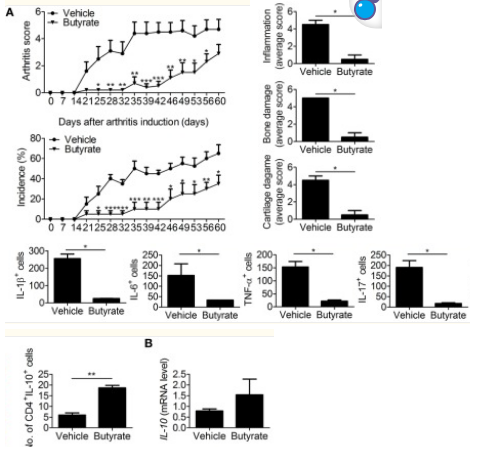
that HDAC inhibition happens at low dose well even ~100mg as the salt orally
something interesting,
when thyroid receptors aren't bound by the hormone / agonist they block DNA transcription. using HDAC. HDAC inhibition is 1 way to help the people who have receptor mutation / resistance, (sort of)
https://academic.oup.com/hmg/article/23/10/2651/614693#10263757
https://scholars.mssm.edu/en/publications/histone-deacetylase-inhibition-reduces-hypothyroidism-induced-neu
So basically people can get some of the gene effects from T3 activation if its lacking, without the t3 , by hdac inhibition . not full effects but some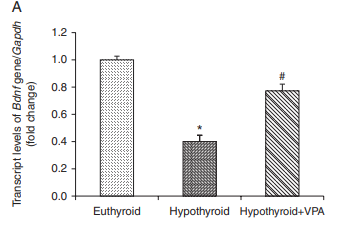
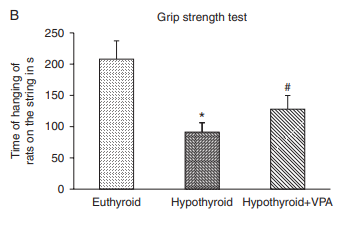
-
@Kvirion If you look at the whole picture I think butyrate is fantastic and definitely a net positive.
I made thread about it a few years ago:
https://lowtoxinforum.com/threads/sodium-butyrate-leads-to-weight-loss-and-less-inflammation-endotoxin.47498/Butyrate increases CO2 in 3 different ways!(Uncoupling, carbonic anhydrase inhibition, as fuel for colonic cells)
It increases testosterone and lowers glutamate, ammonia and endotoxin .
Something that has these credentials, especially the endotoxin part, doesn't tend to increase serotonin.
I wrote about it in this post as there were people taking in-vitro high dosage studies out of context.Post in thread 'Sodium Butyrate leads to weight loss and less inflammation/endotoxin' https://lowtoxinforum.com/threads/sodium-butyrate-leads-to-weight-loss-and-less-inflammation-endotoxin.47498/post-840441
In vitro studies with butyrate matter even
less than they usually do, since they don't take into account that colonic cells use butyrate as a main fuel,changing the whole gut environment.Because you're quoting Peat, I want to mention that he has some rather favorable quotes on butyrate:
Post in thread 'Sodium Butyrate leads to weight loss and less inflammation/endotoxin' https://lowtoxinforum.com/threads/sodium-butyrate-leads-to-weight-loss-and-less-inflammation-endotoxin.47498/post-840681 -
@cs3000 that is interesting on T3!
Maybe that's what Peat was referring to when he said that it facilitated T3 entry In the quote above?
-
@CrumblingCookie said in Random, interesting studies:
@Mauritio @cs3000 from my recent reading:
Treatment of intestinal cells with βHB or feeding mice with a ketogenic diet inhibits mTOR signaling in intestinal cells.Thanks for bringing this up again.
In the above study butyrate had some decent anti-oxidant effects, but where it really shone was at lowering inflammatory cytokines and increasing the expression of the butyrate receptor GPR109A also called HCA2Even wikipedia admits that butyrate /its receptor helps with a lot of diseases.
Interestingly this receptor is also activated by niacin in supraphyiological amounts, so maybe the anti-vitamin A crowd is accidentally right about something.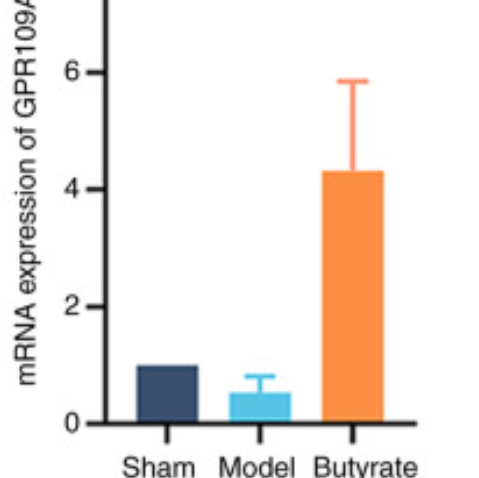
"Studies, done mostly in animals and the cells taken from animals or humans, show or suggest that HCA2 functions to 1) inhibit lipolysis and 2) inhibit inflammation and thereby suppress the development of certain diseases in which inflammation contributes to their development and/or severity.[13][17][18] These diseases include: atherosclerosis,[19] stroke, Alzheimer's disease, Parkinson's disease, multiple sclerosis, pathological pain (i.e. pain due to the abnormal activation of neurons),[13] mastitis,[20] hepatitis due to heavy alcohol consumption,[21] inflammatory bowel diseases, cancer of the colon,[22] and, possibly, psoriasis[23] and brain damage due to heavy alcohol consumption.[24]"
https://en.m.wikipedia.org/wiki/Hydroxycarboxylic_acid_receptor_2
-
Some more interesting studies on butyrate:
-
Age-associated temporal decline in butyrate-producing bacteria plays a key pathogenic role in the onset and progression of neuropathology and memory deficits in 3×Tg-AD mice
https://pmc.ncbi.nlm.nih.gov/articles/PMC11346541/ -
butyrate improves metabolism and reduces muscle atrophy during aging
https://pmc.ncbi.nlm.nih.gov/articles/PMC4693467/ -
"Children with the highest levels of butyrate and propionate (≥95th percentile) in feces at the age of one year had significantly less atopic sensitization and were less likely to have asthma between 3 and 6 years. Children with the highest levels of butyrate were also less likely to have a reported diagnosis of food allergy or allergic rhinitis. Oral administration of SCFAs to mice significantly reduced the severity of allergic airway inflammation."
https://pubmed.ncbi.nlm.nih.gov/30390309/ -
Interesting human trial
https://trialsjournal.biomedcentral.com/articles/10.1186/s13063-022-06891-9
-
-
@Mauritio
 nice thread , results for that trial are released
nice thread , results for that trial are released
https://www.nature.com/articles/s41430-024-01512-x
UCP-1 increased (thyroid hormone increases) even in caloric deficit , increased weight loss without the GLP.
(they said only when prescribed with caloric deficit, which idk would be weird i'd like to look at the full data.gives a nice insight as this dose didnt raise GLP-1, so if want to avoid the GLP effects where its still active in other areas its 600mg as sodium butyrate (enough for HDAC inhibition too)
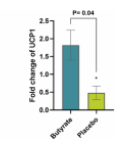
just 20mg/kg ~100mg - 150mg human
doi.org/10.1111/bph.13637
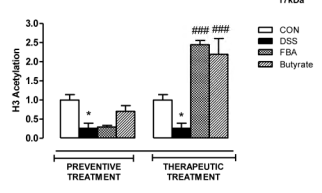
peskypeater posted in that thread showing serotonin in gut from this
https://erepo.uef.fi/server/api/core/bitstreams/30362964-caa5-4cca-b95f-37c2471b3568/content
using high amounts / grams (grams generally not needed),raised higher up and lowered lower down (but
result not statistically significant, big individual variation)

dopamine metabolite large increase, implies higher peripheral dopamine (but need ratio or the dopamine amount to confirm)

-
I remember Click saying that promoting butyrate-generating foods was just a way of recapitulating life as it was in selenium-rich soil, since selenomethionine is converted to α-keto-γ-methylselenobutyrate (KMSB) and works basically the same way as butyrate.
So supplementing selenomethionine mimics a Methionine restriction and also promotes an increase in keto acid similar to butyrate. Interestingly, consuming resistant starch increases butyrate production and also mimics Methionine restriction (and other amino acids like leucine, tryptophan, etc.).
Funny how it works haha
-
@TexugoDoMel yo did you know there are other selenium type aminos and stuff in fish
there's one called selenoine or something like that, I probably spelled it incorrectly
-
@sushi_is_cringe
Selenoneine? I remember seeing some relation to mercury detoxification, but I don't know much about this one in particular.
-
@TexugoDoMel said in Random, interesting studies:
Selenoneine
"In addition, protective roles of selenoneine as a radical scavenger in the heart and blood cells in humans might also be essential for the adaptation to low-oxygen environments at high altitudes.""
""In contrast, tilapia blood, porcine kidney, chicken heart, gizzard and liver, and squid hepatopancreas contained low levels of selenoneine and selenoproteins. Furthermore, porcine liver contained only selenoproteins and not selenoneine. In summary, selenoneine was found to be widely distributed in various animal tissues and occurred at especially high levels in tuna tissues. "
"This selenium compound has strong antioxidant capacity and binds to heme proteins, such as hemoglobin and myoglobin, to protect them from iron auto-oxidation"
-
@cs3000 said:
something interesting,
when thyroid receptors aren't bound by the hormone / agonist they block DNA transcription. using HDAC. HDAC inhibition is 1 way to help the people who have receptor mutation / resistance, (sort of)
https://academic.oup.com/hmg/article/23/10/2651/614693#10263757
https://scholars.mssm.edu/en/publications/histone-deacetylase-inhibition-reduces-hypothyroidism-induced-neu
So basically people can get some of the gene effects from T3 activation if its lacking, without the t3 , by hdac inhibition . not full effects but someBam! So the working mechanism of T3 is not directly cellular stimulation, but inhibition of the inhibition of cell metabolism?
Therefore, vice versa, a practically hypothyroid state would be mimicked by overmethylation of the CpG sites on the DNA (blocking the translation of genes) or by deacetylated/dephosphorylated/demethylated/de-beta-hydroxybutyrylated sites of the lysine chains of the histones (compressing the histones which wrap the DNA strands which prevents DNA access)?To supplement thyroid hormones would work in such circumstances but be a kind of force-feeding, rawhiding override and circumvention of the actual underlying culprits?
But using other inhibitors of HDAC or DNMT could then be actually better and closer to the original cause and also effectively act like thyroid hormones?I used to think of HDACis only as some very beneficial class of substances in a vague context of cancer (even though even in that they are very restricted).
Now they appear much more crucial in all kinds of diseases and chronic impairments.
If I were casually being offered some pure quality HDAC inhibitors I would gladly take them and run a treatment course with them. -
@CrumblingCookie HDAC inhibition also increases expression of thyroid receptor itself.
-
@CrumblingCookie Good point .
Well, sodium butyrate is widely available ... -
Thymol
-Antagonizes estrogen, increases progesterone .
Rat endometriosis study.
HED= 200/400mg
https://pmc.ncbi.nlm.nih.gov/articles/PMC11642495/ -
Mad Honey
-Increases testosterone 2-fold and free testosterone 10-fold.
It didn't affect estrogen and LH,FSH and progesterone only non-significantly.

Caveat: Small therapeutic window , leads to hallucinations in higher doses
Karadeniz Teknik Üniversitesi
https://avesis.ktu.edu.tr
PDF
The effect of mad honey on testosterone levels of male rats-It helps with fracture healing
https://pubmed.ncbi.nlm.nih.gov/29428933/ -
@Mauritio said in Random, interesting studies:
Thymol
-Antagonizes estrogen, increases progesterone .
Rat endometriosis study.
HED= 200/400mg
https://pmc.ncbi.nlm.nih.gov/articles/PMC11642495/Wow! I just took 4 drops of oregano oil two days in a row and felt some very nice warmth and calming sensations. Was trying it for antibiotic effects… didn’t know about this study so thanks for posting it!!

Herbs are cool! This one has some kick to it! And I have common thyme growing as a front lawn! It’s the best to walk on!!! -
@dapose nice, mate .
Looks like thyme and thymol are some of the better substances in the herb category. -
Nice study on metabolic benefits of bromocriptine as a treatment of type 2 diabetes .
https://pubmed.ncbi.nlm.nih.gov/33933677/ -
Interesting study using NMN on wild boars. Benefits on sperm health, testosterone + increase in OXPHOS.
Effect was at least partly SIRT3 dependant.HED of 100mg was somewhat effective but taking in all measures I'd go for the 200 or 400 mg dose as they were more effective.
Although the effect of 400mg wasn't a lot more pronounced on many variables."...improved the antioxidative indexes and increased the levels of testosterone (p < 0.05) in serum. Furthermore, NMN upregulated the protein levels of sirtuin 3 (SIRT3), antioxidation and oxidative phosphorylation (OXPHOS), but downregulated the protein levels of apoptosis in semen. https://pubmed.ncbi.nlm.nih.gov/38790612/"
NMN increases butyrate producing bacteria and Akkermansia as well as the thickness and permeability of the mucosa . It also affected bile acids a lot.
https://pubmed.ncbi.nlm.nih.gov/34395502/ -
@Mauritio said:
NMN increases butyrate producing bacteria and Akkermansia as well as the thickness and permeability of the mucosa . It also affected bile acids a lot.
https://pubmed.ncbi.nlm.nih.gov/34395502/That's tricky to derive an adequate HED from because of the non-linearly dose-dependent effects: The treatment group G2 (0.2mg NMN/mL drinking water) is the odd one out and clearly deviating from the control, the lower-dosed G1 and the higher-dosed G3 and G4 group wrt to most markers. G2 even showed lower body weight gain, i.e. stunted growth.
The authors focused on G1 vs CON comparisons without addressing that odd G2 group.